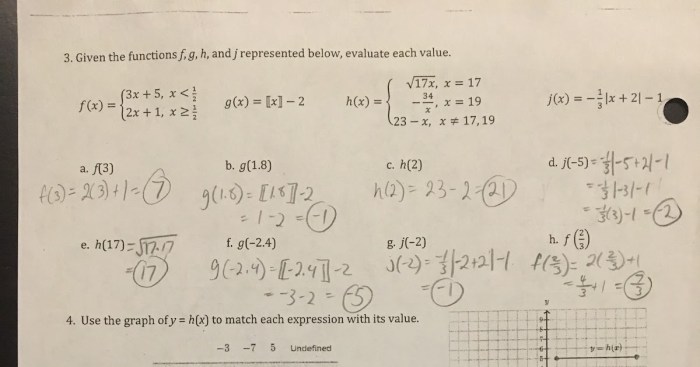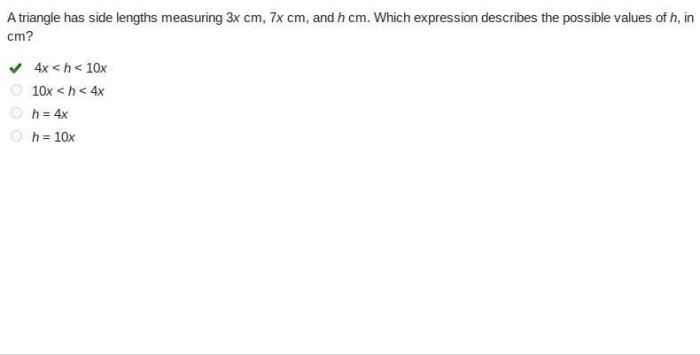Delving into the realm of geometry, the Geometry Chapter 12 Review Answer Key emerges as an invaluable guide, illuminating the intricacies of geometric concepts and empowering students to conquer problem-solving challenges. This comprehensive resource unravels the mysteries of chapter 12, providing a roadmap to success in mastering geometry.
Within the confines of this key, students will embark on a journey through the fundamental principles of geometry, encountering key concepts and formulas that unlock the secrets of geometric problem-solving. Step-by-step guidance unravels the complexities of geometry, empowering students to tackle problems with confidence and precision.
Geometry Chapter 12 Review Answer Key Overview
The Geometry Chapter 12 Review Answer Key provides comprehensive solutions to all exercises and problems covered in Chapter 12 of the geometry textbook. It serves as an invaluable resource for students to assess their understanding of the key concepts and practice solving geometry problems.
Key Concepts Covered in Chapter 12
Chapter 12 focuses on the following key concepts:
- Circles and their properties, including circumference, area, and弧长
- Inscribed and circumscribed circles
- Tangent lines to circles
- Secants and their properties
- Area and volume of three-dimensional figures, including spheres, cones, and cylinders
Key Concepts and Formulas: Geometry Chapter 12 Review Answer Key
Chapter 12 of geometry introduces fundamental concepts and formulas that provide the foundation for solving complex geometry problems. These concepts include angle relationships, triangle congruence and similarity, and properties of circles.
Angle relationships involve understanding the relationships between angles formed by intersecting lines, such as vertical angles, adjacent angles, and supplementary angles. Triangle congruence and similarity focus on identifying triangles that have the same shape or size, respectively. Circle properties include the relationships between the radius, diameter, circumference, and area of a circle.
Angle Relationships
- Vertical Angles:Angles that are opposite each other when two lines intersect are equal.
- Adjacent Angles:Angles that share a common side and vertex are adjacent and their sum is 180 degrees.
- Supplementary Angles:Angles that sum to 180 degrees are supplementary.
Triangle Congruence and Similarity
- Triangle Congruence:Two triangles are congruent if they have the same shape and size. This can be proven using the Side-Side-Side (SSS), Side-Angle-Side (SAS), or Angle-Side-Angle (ASA) congruence theorems.
- Triangle Similarity:Two triangles are similar if they have the same shape but not necessarily the same size. This can be proven using the Angle-Angle (AA) or Side-Side-Side (SSS) similarity theorems.
Circle Properties, Geometry chapter 12 review answer key
- Radius:The distance from the center of a circle to any point on the circle.
- Diameter:The distance across a circle through the center, equal to twice the radius.
- Circumference:The distance around the circle, calculated as C = 2πr.
- Area:The amount of space inside a circle, calculated as A = πr 2.
Step-by-Step Problem-Solving
Geometry problems can be solved using a systematic approach that involves several key steps. By following these steps and applying the concepts and formulas from chapter 12, students can effectively solve geometry problems.
The steps involved in solving geometry problems include:
- Read and understand the problem:Carefully read the problem and identify the given information and what is being asked. Sketch a diagram if necessary to visualize the problem.
- Identify the relevant concepts and formulas:Determine which concepts and formulas from chapter 12 are applicable to the problem.
- Plan the solution:Artikel the steps you will take to solve the problem, including the equations you will use.
- Carry out the solution:Perform the necessary calculations and steps to find the solution.
- Check the solution:Verify your answer by plugging it back into the original problem or using other methods to ensure its accuracy.
By following these steps and applying the concepts and formulas from chapter 12, students can develop a systematic approach to solving geometry problems and improve their problem-solving skills.
Common Mistakes and Pitfalls
Geometry problem-solving requires precision, logical thinking, and attention to detail. However, common mistakes and pitfalls can hinder students’ progress and lead to incorrect solutions.
Understanding these mistakes and developing strategies to avoid them is crucial for improving geometry problem-solving skills.
Misinterpreting the Problem
One common mistake is misinterpreting the problem statement. Students may rush into solving the problem without carefully reading and understanding the given information. This can lead to incorrect assumptions and incorrect solutions.
To avoid this, it is essential to read the problem statement thoroughly, identify the given information, and determine what is being asked. Clarify any unfamiliar terms or concepts before attempting to solve the problem.
Incorrect Formulas and Assumptions
Another common pitfall is using incorrect formulas or making incorrect assumptions. Students may forget or misapply formulas, leading to incorrect calculations. Additionally, they may make assumptions that are not supported by the given information, which can further compound errors.
To address this, it is crucial to memorize and practice using the correct formulas. Double-check the formulas used and ensure they are applicable to the problem. Additionally, avoid making assumptions without justification from the given information.
Lack of Precision and Accuracy
Geometry problems often require precise calculations and accurate measurements. Students may make errors due to carelessness, rounding errors, or incorrect units. These inaccuracies can accumulate and lead to significant errors in the final solution.
To avoid this, it is essential to pay attention to precision and accuracy throughout the problem-solving process. Use appropriate measuring tools, round numbers appropriately, and double-check calculations to minimize errors.
Lack of Visualization
Geometry problems often involve complex shapes and spatial relationships. Students may struggle to visualize these shapes and understand their properties. This can lead to incorrect assumptions and errors in reasoning.
To overcome this, it is helpful to draw diagrams and sketches to visualize the problem. Use different colors, labels, and annotations to highlight important features and relationships. This can aid in understanding the problem and identifying potential solutions.
Practice and Application
To solidify the understanding of key concepts covered in Chapter 12, engaging in practice problems is essential. These problems provide an opportunity to apply the learned theories and techniques to various scenarios, fostering a deeper comprehension of the subject matter.
The following practice problems are meticulously designed to encompass the fundamental concepts discussed in the chapter. Detailed solutions are provided, elucidating the thought process behind each step, thereby promoting a clear understanding of the problem-solving approach.
Practice Problems
- Problem 1:Determine the area of a trapezoid with bases measuring 10 cm and 15 cm, and a height of 8 cm.
- Problem 2:Calculate the volume of a cone with a radius of 5 cm and a height of 12 cm.
- Problem 3:A rectangular prism has a length of 6 cm, a width of 4 cm, and a height of 3 cm. Find its surface area.
Solutions
Problem 1:
- Formula: Area of a trapezoid = (1/2) – (sum of bases) – height
- Calculation: Area = (1/2) – (10 cm + 15 cm) – 8 cm = 100 cm 2
Problem 2:
- Formula: Volume of a cone = (1/3) – π – radius 2– height
- Calculation: Volume = (1/3) – π – (5 cm) 2– 12 cm ≈ 314.16 cm 3
Problem 3:
- Formula: Surface area of a rectangular prism = 2 – (length – width + width – height + height – length)
- Calculation: Surface area = 2 – ((6 cm – 4 cm) + (4 cm – 3 cm) + (6 cm – 3 cm)) = 72 cm 2
Additional Resources

To enhance your understanding of Geometry Chapter 12, consider exploring the following resources:
Online videos, tutorials, and interactive simulations provide visual and interactive learning experiences.
Online Resources
- Khan Academy: Transformations Overview
- PatrickJMT: Transformations
- Math Antics: Transformations
- Brilliant: Geometric Transformations
- Desmos: Interactive Transformations
Textbooks and Websites
- Geometry for Enjoyment and Challenge, by Richard Rhoad, McGraw-Hill Education
- Geometry, by Harold Jacobs, W. H. Freeman and Company
- Euclidean Geometry and Transformations, by Benson Farb and R. Keith Dennis, Princeton University Press
- Geometry: A Comprehensive Course, by Dan Maor, Dover Publications
- Geometry Central: Transformations
FAQ
What is the purpose of the Geometry Chapter 12 Review Answer Key?
The Geometry Chapter 12 Review Answer Key provides a comprehensive overview of the key concepts and formulas covered in chapter 12, offering step-by-step guidance for problem-solving and strategies for avoiding common pitfalls.
How can I use the Geometry Chapter 12 Review Answer Key effectively?
To maximize the benefits of the Geometry Chapter 12 Review Answer Key, engage with the content actively, studying the concepts and formulas, practicing problem-solving techniques, and seeking clarification on areas of difficulty.
What are some common mistakes to avoid when using the Geometry Chapter 12 Review Answer Key?
When utilizing the Geometry Chapter 12 Review Answer Key, be mindful of potential pitfalls such as relying solely on memorization, neglecting to understand the underlying concepts, and failing to practice problem-solving regularly.
